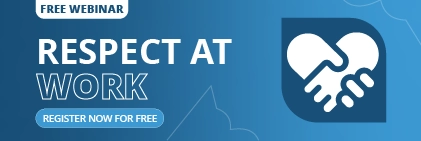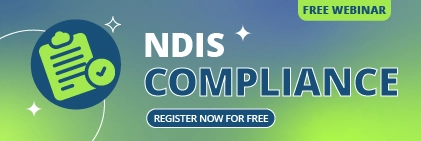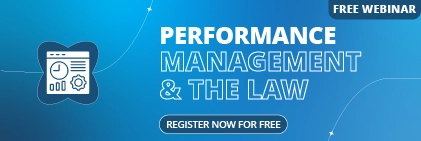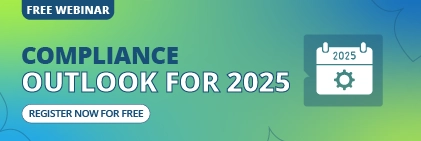Let’s face it: life in the workplace, even in beautiful Australia, isn’t always smooth sailing. From a spilled coffee that leads to a slippery floor (trust me, I’ve seen it happen!) to something far more serious, incidents pop up. It’s just part of doing business. But here’s the thing: how we handle those moments can make all the difference. That’s where top-notch incident reporting software comes in.
Think about it. We all want our teams to feel safe and supported. And for businesses, staying on the right side of those all-important Work Health and Safety (WHS) regulations is a big deal. Choosing the right software isn’t just about ticking boxes; it’s about making things smoother, safer, and brighter for everyone.
This guide explores ten of Australia’s best incident reporting software. We’ll explore what makes each tick, who it’s best for, and a rough idea of what you might pay. I aim to give you the lowdown and help you pick a system that fits your employees and company.
Why Bother with Incident Reporting Software?
You might think, “Can’t we just use a spreadsheet?” And sure, you could. But imagine the headaches when things get busy. A good incident reporting software helps you:
Stay Compliant: This is huge in Australia. WHS laws are serious; these tools help you meet those obligations.
- Identify the Patterns: Incidents aren’t just one-offs. This software helps you see trends, determine why things are happening, and stop them from repeating. It’s like being a workplace detective!
- Build a Better Culture: When reporting an incident is easy and fuss-free, people are more likely to do it. This builds trust and shows everyone that safety truly matters.
- Cut Down on Paperwork: Who loves paperwork? Nobody! These systems automate many fiddly bits, freeing up time for more important things, like preventing another incident.
- Get Real Insights: No more guesswork. You get solid data to decide where to focus your safety efforts.
- Hold Folks Accountable: Assign tasks, track progress, and ensure incidents are sorted. It keeps everyone on the same page.
Alright, let’s get into the nitty-gritty of these fantastic tools!
1. Sentrient – Incident Reporting Software
Sentrient isn’t just about incident reporting; they offer a compliance toolkit. Think of them as your workplace compliance buddy, ensuring you’re doing things by the book, especially regarding WHS. They pride themselves on being user-friendly and surprisingly affordable.
Key Features:
- Logging incidents is a breeze – super intuitive.
- Automated workflows? Yes, please! Tasks and escalations happen on their own.
- A central spot for all your incident records.
- You can tweak forms and checklists to suit your needs.
- Fantastic reporting and analytics to identify those trends.
- Plays nicely with other Sentrient compliance bits.
- Got a mobile? Report incidents from anywhere!
Pros:
- Seriously quick to set up, and no nasty surprise costs.
- It’s part of a bigger compliance package, which is fantastic if you want an all-in-one HR and WHS solution.
- Their reports and analytics are top-notch.
- Great for encouraging a culture where everyone takes responsibility.
Cons:
- You won’t find pricing on their website, so ask them for a quote.
- It’s comprehensive, which might be more than a small business needs.
Best Suited for: Small to medium-sized businesses and even larger organisations that want their incident reporting to be part of a bigger, smarter compliance and HR system.
Pricing: Contact Sentrient directly for a free demo and a personalised quote.
2. LinkSafe by Civica – Incident & Hazard Reporting
LinkSafe shines when it comes to managing contractors and their compliance. Their incident and hazard reporting module is a core part, making it super easy to capture and manage every little (or big) thing that happens, especially in places where many external contractors are on site.
Key Features:
- Specific sections just for incidents and hazards.
- Workflows that automatically send out notifications and kick off investigations.
- It hooks right into their contractor management system – neat!
- Forms that you can customise to your heart’s content.
- Real-time reporting and handy dashboards.
- Handles all sorts of incidents: safety, environmental, quality… You name it.
- Works great on your phone for reporting from the field.
Pros:
- A fantastic choice if your business uses a lot of contractors and you need to manage both their presence and any incidents that occur.
- Strong focus on keeping everything compliant and well-governed.
- Automated alerts mean no one misses a beat.
- They offer flexible pricing, which is always a plus.
Cons:
- No public pricing. You’ll need to get a specific quote, as it can depend on how many contractors you manage.
- It might be a bit overkill if you don’t deal with many contractors.
Best Suited for: Businesses that work extensively with contractors, like construction, manufacturing, or any industry where you need to track incidents and hazards alongside contractor compliance.
Pricing: Contact LinkSafe for a custom quote.
3. WHSMonitor – Incident Management Software
WHSMonitor is all about Work Health and Safety, offering a full suite of tools. Their incident management module helps businesses of all shapes and sizes handle safety incidents, assess risks, and stay compliant. They focus on making it easy to use and sticking to Australia’s WHS rules.
Key Features:
- Manages incidents from start to finish – reporting, investigating, fixing things.
- It ties into hazard identification and risk assessment. Smart!
- Tracks employee info related to incidents.
- Customisable dashboards and over 100 pre-made reports.
- Can connect with thousands of other apps.
- Automatic alerts and notifications keep everyone in the loop.
- Built to meet those crucial ISO standards and legal requirements.
Pros:
- Super flexible and can grow with your business, regardless of size or industry.
- All their compliance modules integrate seamlessly – efficiency gold!
- Excellent reporting capabilities for understanding safety performance.
- They keep it updated with the latest Australian WHS laws.
- Its user-friendliness encourages people to report things.
Cons:
- Pricing isn’t public; it depends on the package and your company’s scale.
- While it’s excellent, a small business might find it has more features than they need for basic incident reporting.
Best Suited for: Businesses of all sizes across Australia that need a comprehensive, integrated WHS system, especially if robust incident reporting and risk management are high on the list.
Pricing: Get in touch with WHSMonitor for a tailored quote.
4. RiskWare – Incident Reporting and Tracking Software
RiskWare, brought to you by PAN Software, is like the Rolls-Royce of risk management platforms. Their incident management module is a serious player, designed to get all your risk-related activities under one roof, making governance, risk, and compliance (GRC) much smoother.
Key Features:
- Efficiently track, document, and resolve incidents.
- It integrates beautifully with their broader risk management, audit, and claims modules.
- Automated workflows and task reminders – set and forget it (almost!).
- Customisable alerts and cool “heatmaps” to visualise your risk data.
- Powerful analytics to help you assess risk and identify trends.
- Scales easily as your organisation grows and gets more complex.
- A strong emphasis on stopping risks before they become problems.
Pros:
- A truly comprehensive solution for managing both risk and incidents together.
- Everything is centralised, saving you time and headaches.
- Highly customisable to fit even the most unique organisational quirks.
- You get clear visibility and accountability with real-time insights.
- Fantastic reporting and analytics for always getting better.
Cons:
- Pricing is “on request,” which usually means it’s a premium solution, so prepare for that.
- It might be a bit much for smaller businesses that need simple incident reporting.
Best Suited for: Medium to large companies, government bodies, or organisations with a complex risk management setup that needs an advanced, integrated GRC platform.
Pricing: You’ll need to contact RiskWare for their pricing details.
5. RapidIncidet – Incident Management Software
RapidGlobal offers a suite of WHS software, and its Incident Management Solution is all about making incident reporting, investigations, and fixing things as straightforward as possible. Its focus is on being user-friendly and ensuring compliance with WHS regulations.
Key Features:
- Simple forms for reporting incidents.
- You can set up workflows for investigations and approvals.
- Manage and track actions to completion.
- Tools to help you get to the root cause of problems.
- Reports and analytics to see incident patterns.
- Integrates with other RapidGlobal tools (like inductions or contractor management).
- Report incidents from your phone – handy when you’re out and about.
Pros:
- Part of a larger WHS family, so it’s great if you want a connected safety system.
- Helps you streamline those tricky incident investigations.
- Good at helping you figure out why things happened, so they don’t happen again.
- Helps keep you compliant and accountable.
Cons:
- Specific pricing isn’t advertised online, so you must ask.
- The look and feel might not be as “sleek” as some of the newer kids on the block, but functionality is key, right?
Best Suited for: Businesses looking for a dedicated incident management tool to link up with other WHS processes, especially if you’re already using or considering other RapidGlobal products.
Pricing: Contact RapidGlobal directly for pricing info.
6. IncidentReport.com.au
Incident Report.com.au is refreshingly straightforward. They offer an online incident reporting system that is simple and quick. This could be your go-to if you need a no-fuss way to log incidents.
Key Features:
- Simple, ready-to-use incident report forms.
- You can tweak categories and fields to fit.
- Great for digitising any paper forms you might still be using.
- Basic reporting and tracking – keep things clear.
- Designed for super quick incident submission.
- Handles all sorts of incidents: adverse events, near misses, equipment issues, etc.
Pros:
- Very affordable and easy to use, especially for smaller businesses or those just starting with digital reporting.
- You can get up and running quickly with their pre-built forms.
- Perfect for making that jump from paper to digital.
- Offers different price tiers depending on how many reports you expect.
Cons:
- It’s a bit more basic than the comprehensive GRC platforms – don’t expect super-deep analytics or complex integrations.
- Pricing is USD, so remember to factor in currency exchange for your Australian budget.
Best Suited for: Small businesses, startups, or organisations that need a simple, affordable, easy-to-use incident reporting solution without many bells and whistles.
Pricing:
Micro: USD 150/month (up to 5 reports/month, 1 location)
Ultimate: Custom quote for more reports and locations.
7. Safety Champion – Incident Reporting Software
Safety Champion offers a versatile health and safety software designed to make compliance and risk management less of a headache. Their incident reporting module is a core part of their offering, boasting customisable workflows and real-time insights. What’s even better? They’ve got a free plan to get you started!
Key Features:
- Handles everything from reporting an incident to investigating it and implementing corrective actions.
- Workflows and forms you can make your own.
- Real-time reports and dashboards – see what’s happening right now.
- Connects seamlessly with other Safety Champion modules (like audits, inspections, training).
- Super friendly to use.
- Yup, there’s a free plan!
Pros:
- Flexible enough for businesses of all shapes and sizes.
- Loads of customisation options for your processes and forms.
- That free plan is a fantastic way to try before you commit.
- Integrates with other safety management functions, making life easier.
- They offer good customer support – a real person on the phone or email is always a plus!
Cons:
- The free plan is limited in users and features, so you’ll likely grow out of it.
- Might not have as many public reviews as some of the bigger players, but that doesn’t mean it’s not great.
Best Suited for: Startups, small to medium businesses, and even mid-market companies in Australia looking for an affordable yet well-rounded safety management system that includes solid incident reporting.
Pricing:
Free: Up to 2 users, limited modules.
Silver: $75/month (up to 5 users, limited modules).
Gold: $125/month (up to 10 workers, complete access, customisation).
For bigger teams, contact them for a custom quote.
8. Beakon – Incident Management Software
Beakon offers a robust incident management solution as part of its larger compliance and workforce management platform. It works with various industries, from food and beverage to mining, and focuses on quick setup and ease of use, even in complex environments.
Key Features:
- Comprehensive tools for reporting and investigating incidents.
- Connects with other Beakon modules: visitor management, e-learning, task tracking.
- Automated workflows for incident response.
- Forms and fields you can customise.
- Real-time reporting and analytics.
- Designed to be fast to set up and easy to use.
- Scalable for various industries and company sizes.
Pros:
- Excellent integration capabilities if you’re already in the Beakon ecosystem or plan to be.
- They focus on getting you up and running quickly, which means quicker adoption by your team.
- Great for large, complex organisations with diverse safety needs.
- Aims for a quick return on your investment.
Cons:
- Pricing isn’t public and likely geared towards larger, enterprise clients.
- It could be more feature-rich (and thus, more expensive) than a small business truly needs.
Best Suited for: Mid- to large enterprises in high-risk industries like manufacturing, mining, construction, and oil and gas that need an integrated compliance and workforce management platform with powerful incident management.
Pricing: Contact Beakon directly for a customised quote.
9. CAMMS – Incident Reporting Software
CAMMS is another big name in the Governance, Risk, and Compliance (GRC) world, and its incident and event reporting modules are top tier. Its philosophy is to centralise GRC efforts, making capturing, escalating, and resolving incidents easier while linking them to your broader risk strategy.
Key Features:
- Built for best-practice incident reporting, including quick capture and automatic escalation.
- A handy mobile app for reporting incidents on the go.
- Connects seamlessly with your risk registers – a smart move to find root causes.
- Automated workflows to get incidents resolved.
- Generates comprehensive reports to help you reduce incident rates.
- Intuitive and easy to use, even for mobile reporting.
- It supports multiple languages, which is a bonus for diverse teams.
Pros:
- Perfect if you must weave incident management into your bigger GRC picture.
- Strong focus on linking incidents back to risks for proactive prevention.
- Highly configurable with plenty of ready-to-use templates.
- Modern, slick user interface and works great on mobile.
- Quick to implement and simple to configure.
Cons:
- As a comprehensive GRC solution, there might be more than a minimal business need for just incident reporting.
- Pricing isn’t publicly listed; you’ll need to request a demo to get a quote.
Best Suited for: Medium to large organisations, especially those focused on enterprise risk management, compliance, and strategic planning, needing an integrated GRC solution with robust incident and event reporting.
Pricing: Request a free demo from CAMMS for a tailored quote.
10. MiSafe Solutions – Incident Management Software
MiSafe Solutions takes a unique approach: they offer bespoke risk management software, including incident management systems. What does that mean? They build it specifically for your organisation, tailored to your needs and budget. They even work with multiple suppliers to find the perfect fit.
Key Features:
- Customisable incident management systems for reporting, investigation, and analysis.
- You can add tasks and actions that automatically feed into your risk register.
- Comprehensive reporting with clear graphs and visual cues.
- It works on any device, including offline apps, and is brilliant for remote work!
- Covers a wide range of areas: safety, environment, quality assurance, product quality, and even general business risks.
- Integrates with their other MiSafe risk management services.
Pros:
- Truly custom-made to your business – you get precisely what you need, no more, no less.
- They draw from different software providers, giving you plenty of options.
- Strong focus on risk assessment and connecting incidents to your broader risk strategy.
- Offline capabilities are a huge plus for field teams.
- Clear tracking and reporting.
Cons:
- No public pricing: you must consult with them.
- Because it’s custom, the setup might take longer than an off-the-shelf product.
Best Suited for: Businesses of all sizes, especially those with unique, complex, or precise incident reporting and risk management needs. It is also great if you want a complete HSE (Health, Safety, Environment) consultation alongside your software.
Pricing: Contact MiSafe Solutions for a free remote assessment and a custom quote.
Choosing the Best Incident Reporting Software for Your Australian Business
The “best” incident reporting software ultimately depends on your organisation’s unique needs, size, industry, and budget. Consider the following factors when making your decision:
- Your Industry and Specific Needs: Do you have unique reporting requirements (e.g., healthcare, construction, manufacturing)? Do you need to track specific types of incidents beyond typical WHS?
- Organisation Size and Scalability: A small business might not need the extensive features of an enterprise-level GRC platform, while larger organisations will require robust scalability and integration.
- Ease of Use for All Users: The software must be intuitive enough for every employee, from field workers to senior management, to ensure high adoption rates and accurate data entry.
- Integration with Existing Systems: Will the incident reporting software seamlessly integrate with your current HR, WHS, or business management systems?
- Reporting and Analytics Capabilities: How vital are detailed insights, trend analysis, and customisable reports for your decision-making processes?
- Mobile Accessibility: Is it crucial for your team to report incidents from mobile devices or offline?
- Support and Training: What kind of customer support and training resources does the vendor offer? Is local Australian support available?
- Pricing Model: Understand the licensing structure (per user, per module, enterprise) and any hidden costs. Always request a detailed quote tailored to your needs.
- Compliance Requirements: Ensure the software helps you meet specific Australian WHS regulations and other relevant industry standards.
By carefully evaluating these factors against the strengths and weaknesses of each provider, you can select the incident reporting software that best empowers your Australian business to foster a safer workplace, improve efficiency, and maintain compliance.
Frequently Asked Questions (FAQs)
You’ve got questions, I’ve got answers! Let’s clear up a few common queries.
1. What exactly is incident reporting software?
Simply put, it’s a digital tool. It helps businesses record, track, investigate, and manage all sorts of incidents – from a near miss (like that almost-spilled coffee!) to a full-blown workplace accident, a sneaky security breach, or even an environmental hiccup. It centralises all that info, so it’s not scattered across different spreadsheets or forgotten notes.
2. Why do Australian businesses need this software?
Oh, where to begin! It’s super important for a few reasons:
- WHS Compliance: Australia’s workplace health and safety laws are no joke. This software helps you tick all the boxes and show you’re serious about safety.
- Risk Management: Think of it as your early warning system. By logging incidents, you can see patterns, understand potential dangers, and prevent them from happening again.
- Always Getting Better: Every incident is a lesson. This software helps you learn from what went wrong to make things safer for tomorrow.
- Saves Time: No more endless paperwork! These tools automate so much, allowing your team to focus on bigger, more impactful tasks.
- Data, Data, Data: Get real, solid information on where incidents happen, what type, and how quickly they’re resolved. That data helps you make intelligent decisions.
3. What should I look for when picking a system?
Great question! Here are my top picks for features:
- Easy to use: No one will use it if it’s clunky. Reporting an incident, whether from a desktop or phone, should be simple.
- Customisation: Can you tweak the forms and workflows to fit your business? That’s key.
- Automated notifications: Does it tell the right people when something happens, without you chasing them manually?
- Investigation tools: Do they help you dig deep to find the root cause?
- Action tracking: Can you assign tasks and see if they’ve been completed?
- Central database: One place for everything, always.
- Good reporting: Can you easily pull reports and see trends?
- Integrations: Does it play nicely with your other HR or WHS systems?
- Security: Is your sensitive data safe and sound?
4. How much does this software cost in Australia?
This is where it gets a bit “how long is a piece of string?” The price tag can vary based on how many features you need, how big your team is, and whether it’s cloud-based or installed on your servers. Some offer free basic versions (a great way to dip your toes in!), while others are monthly subscriptions per user or custom quotes for big businesses. You could be looking at anything from a free tier up to hundreds, or even thousands, of dollars a month for enterprise-level solutions. It pays to get specific quotes!
5. Will these help me with my WHS obligations?
Absolutely! That’s one of their main superpowers. All the software mentioned here is designed with Australian WHS compliance in mind. They provide structured ways to report, track investigations, assign actions, and generate reports that prove you’re doing your due diligence and meeting those essential legal requirements.
6. Can my team report incidents from their phones?
In most cases, yes! Modern incident reporting software usually includes dedicated mobile apps or a mobile-friendly website. This is a game-changer, especially for anyone working in the field or on the factory floor. They can snap a picture, fill out a quick form, and report an issue immediately. Super convenient!
7. How long does it take to set up?
It varies quite a bit. For simpler, off-the-shelf solutions, you could be up and running in a few hours or a day or two. But if you’re going for a comprehensive, highly customised system, especially for a larger organisation, it could take several weeks, or even a few months. That usually includes migrating old data, setting up all your custom forms, and training your team. But believe me, the investment in time upfront pays off later!





